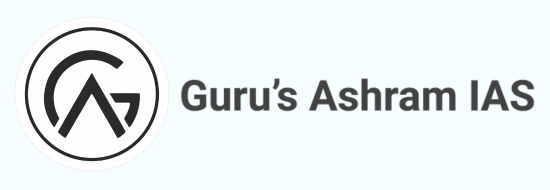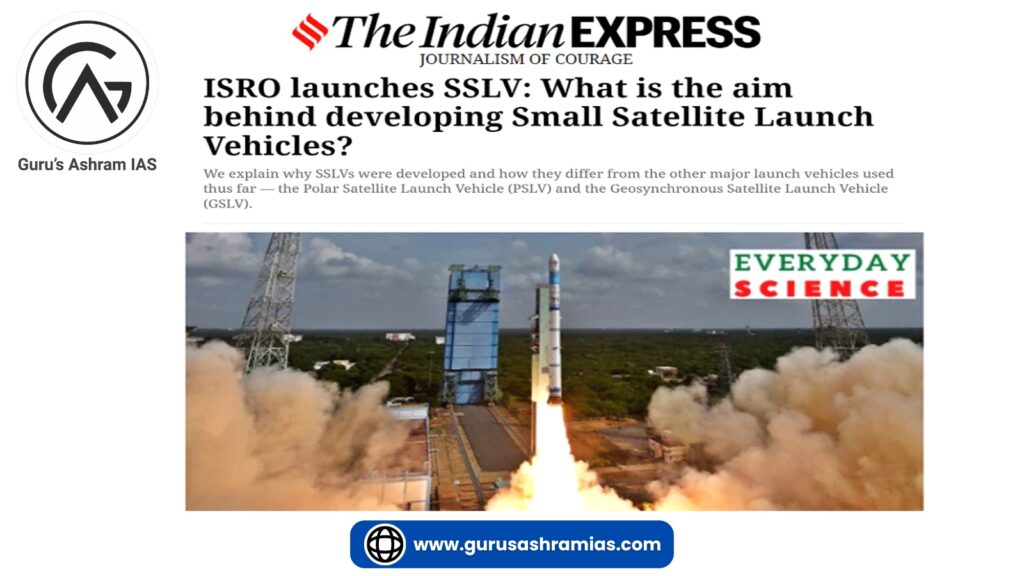ISRO launched SSLV
- Indian Space Research Organisation (ISRO) successfully launched the third developmental flight of Small Satellite Launch Vehicle (SSLV).
- It accurately placed the Earth Observation Satellite EOS-08 in orbit, also signalling the completion of ISRO / Department of Space’s SSLV development project.
Key facts about SSLV:
- ISRO’s SSLV is a three-stage launch vehicle designed with three solid propulsion stages.
- It also has a liquid propulsion-based Velocity Trimming Module (VTM) as a terminal stage, which helps in adjusting the velocity to place the satellite in orbit.
The need for SSLV:
- The goal of SSLV is to build low-cost launch vehicles that are quick to build and require minimal infrastructure.
- SSLV can launch mini, micro or nanosatellites (weighing 10 to 500 kg) into an orbit of 500 km.
- Small payloads are required for satellite launches by businesses, government agencies, universities and laboratories.
- New Space India Limited (NSIL) is the commercial arm of ISRO, whose primary responsibility is to facilitate Indian industries to undertake advanced technology space related activities.
The advantages of SSLV:
- It takes only 72 hours to integrate, while the Polar Satellite Launch Vehicle (PSLV) and Geosynchronous Satellite Launch Vehicles (GSLV) take 70 days.
- It is an on-demand vehicle. Only six people are required to complete this work quickly and its cost is about Rs 30 crore.
PSLV and GSLV:
PSLV:
- It is the third generation of Indian satellite launch vehicles.
- It was first used in the year 1994 after which more than 50 successful PSLV launches have taken place.
- It is also called the ‘workhorse of ISRO’ for continuously launching various satellites into low earth orbits (less than 2,000 km altitude) with high success rate.
- It successfully launched two spacecraft Chandrayaan-1 (in 2008) and Mars Orbiter Mission (in 2013).
- It can carry a payload of up to 1,750 kg into Sun-Specific Polar Orbit (SSPO) at an altitude of 600 km.
- SSPO is synchronous with the Sun i.e. they pass through the Earth region at the same local time every day.
GSLV:
- It is developed and operated by ISRO to launch satellites and other space objects into Geosynchronous Transfer Orbit (GTO).
- GTO is an elliptical orbit in which a spacecraft enters before moving into a geosynchronous orbit or geostationary orbit around the Earth.
- GSLV is a three-stage launch vehicle.
- The first stage comprises a solid booster, the second stage a liquid engine and the third stage an indigenously built Cryogenic Upper Stage (CUS) carrying cryogenic propellant.
New-Space India Limited (NSIL):
- is a wholly owned Government of India Company under the administrative control of Department of Space (DOS).
NSIL’s key business areas include:
- Manufacturing of Polar Satellite Launch Vehicle (PSLV) and Small Satellite Launch Vehicle (SSLV) for industry.
- Creation and marketing of space-based services, including launch services and space-based applications such as transponder leasing, remote sensing and mission support services.
- Construction of satellites (both communication and earth observation) as per user requirements.
- Transfer of technology developed by ISRO Centres / Units and institutions of Department of Space.




